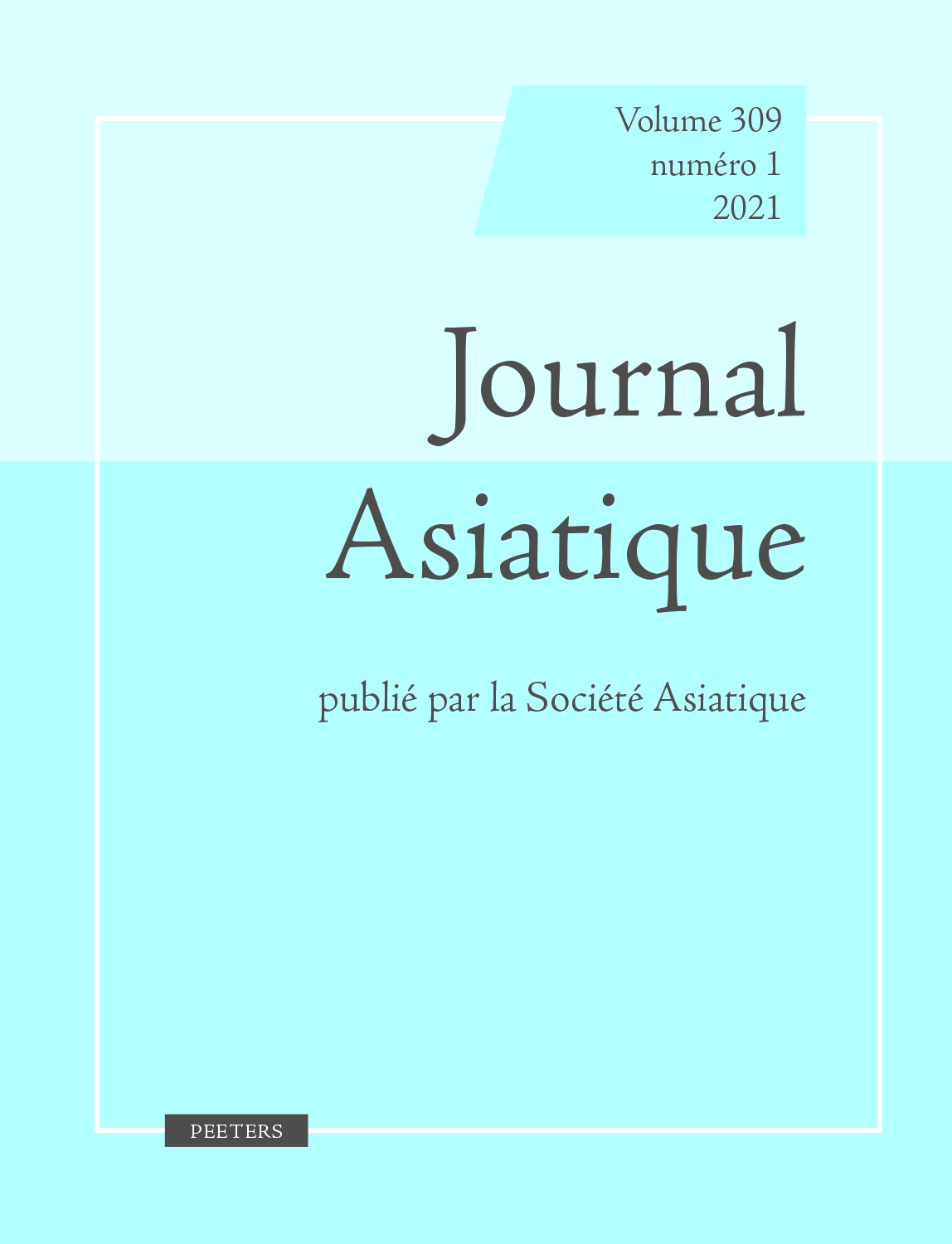 previous article in this issue previous article in this issue | next article in this issue  |

Preview first page |
Document Details : Title: Indiens et Proche-Orientaux dans une grotte de Suquṭrā (Yémen) Author(s): DRIDI, H. Journal: Journal Asiatique Volume: 290 Issue: 2 Date: 2002 Pages: 565-610 DOI: 10.2143/JA.290.2.504301 Abstract : Les sources anciennes situent l'île de Suquṭrā, au débouché du golfe d'Aden, entre la corne de l'Afrique et la péninsule Arabique et précisent qu'elle se trouvait sur les routes commerciales reliant la Méditerranée au sous-continent indien. Ces mêmes sources indiquent également qu'elle était peuplée d'Arabiques et d'Indiens. Mais malgré les prospections et les fouilles menées à partir de la fin du XIXe s., l'archéologie n'a toujours pas livré des témoignages indiscutables en faveur de telles assertions. À l'occasion du tournage d'un film documentaire, nous avons pu explorer la grotte de Hoq et y observer des vestiges archéologiques d'importance pour l'histoire de l'île. En plus des nombreux brûle-parfums et des graffitis rédigés en brahmi, en sudarabique et en guèze, cette grotte recelait une tablette en bois portant une inscription de type palmyrénien. Ces témoignages permettent non seulement de confirmer la présence d'Arabiques et d'Indiens sur l'île, mais fournissent également des données inédites d'une part sur les pratiques cultuelles locales et d'autre part sur la présence de Proche-Orientaux dans l'océan Indien au IIIe s. ap. J.-C. Historical sources report that the island of Suquṭrā at the outlet of the Gulf of Aden, between East Africa and the Arabian peninsula, was situated along the trade routes linking the Mediterranean area to the Indian sub-continent. It is equally reported that the island was partially inhabited by Indians and Arabians. owever despite the investigations carried out since the end of the 19th century, no archaeological evidence attesting the presence of inhabitants were brought to light. During the shooting of a documentary film, we had the oppurtunity to visit the Hoq cave where we had occasion to see some archaeological remains of great importance for the history of the island. In addition to incenseburners and graffiti written in Brahmi, South Arabian and Ge{ez, this cave contained a wooden tablet bearing a palmyrene-type inscription. This evidence confirms not only the Indian and Arabian presence on the island but provides also new data concerning the local cultic practices and the presence of Near-Easterners in the Indian Ocean in the third century A.D. |
|


